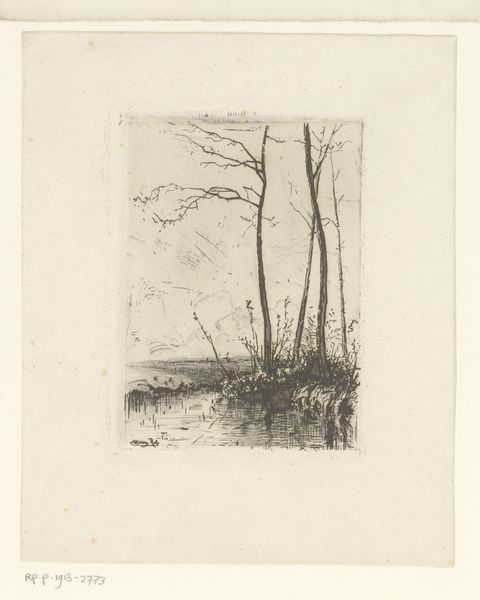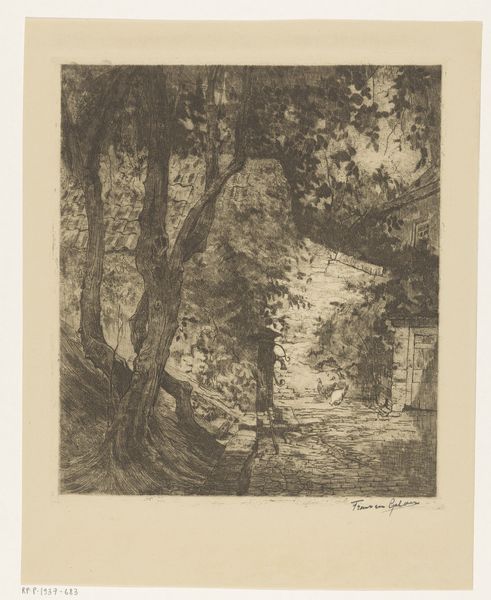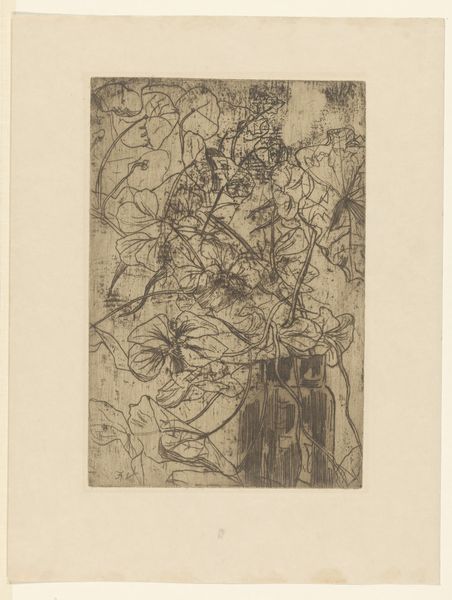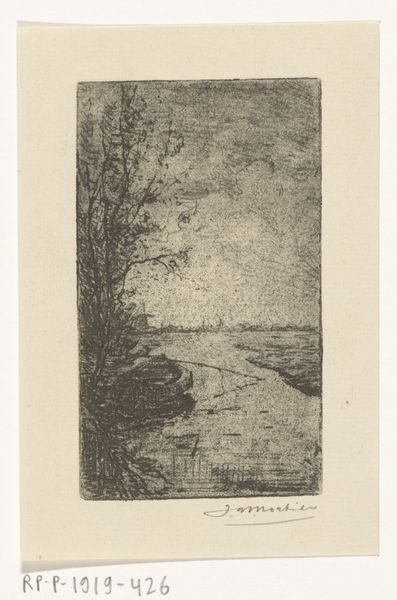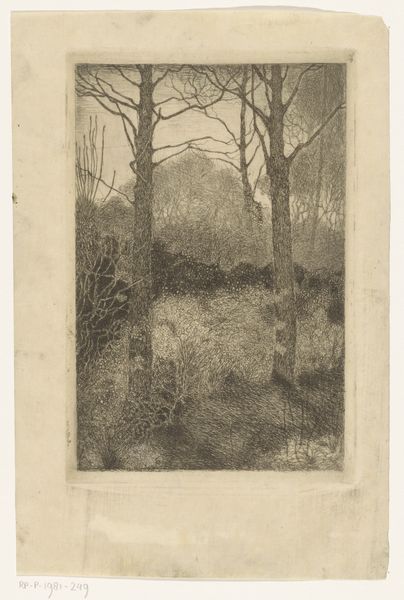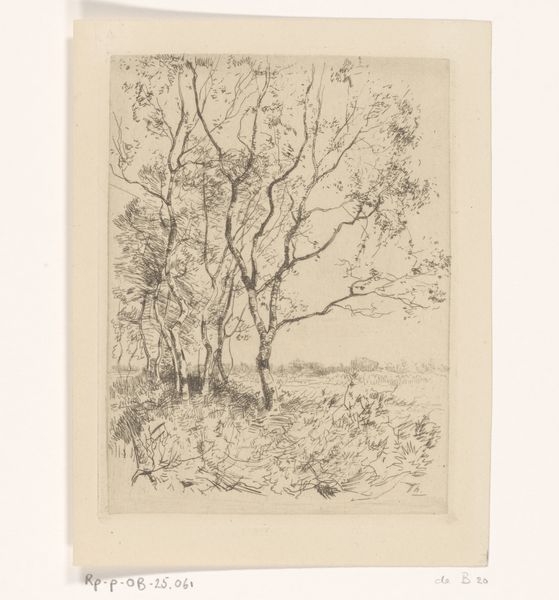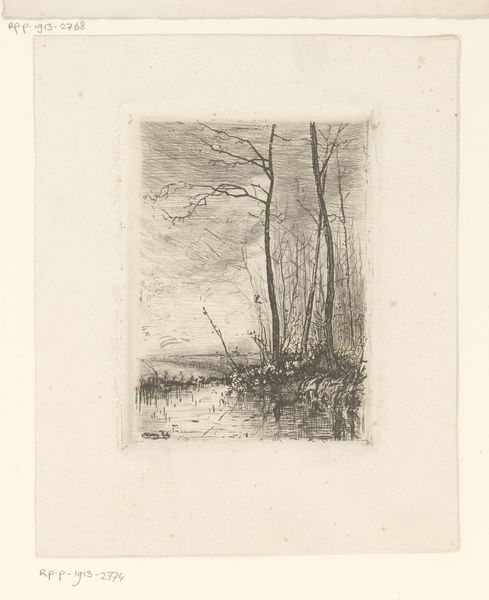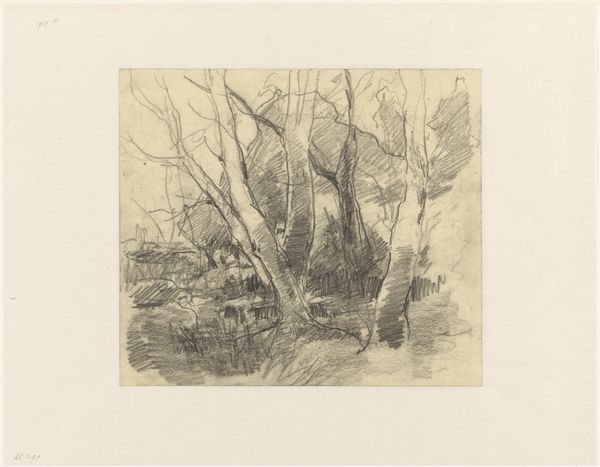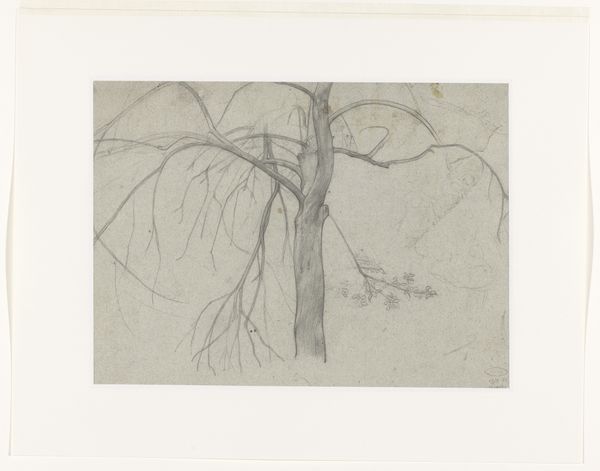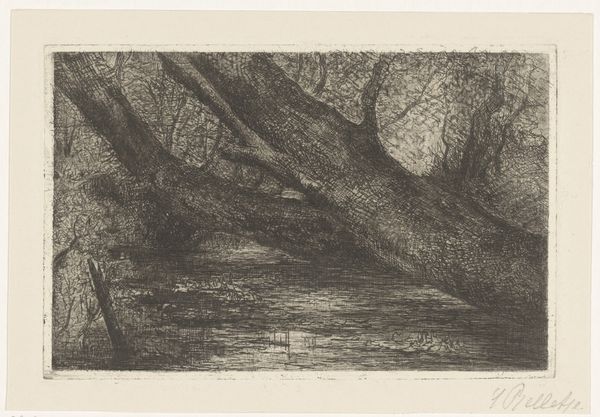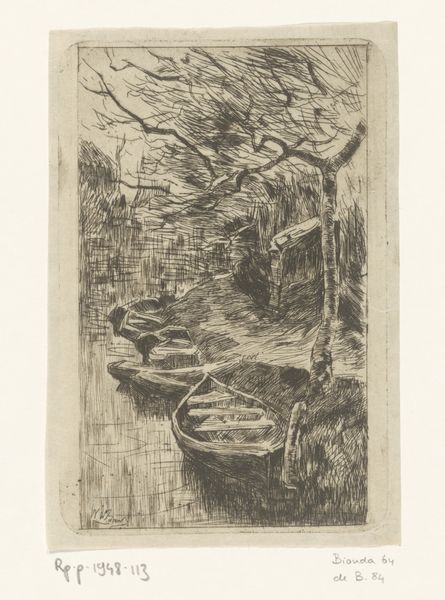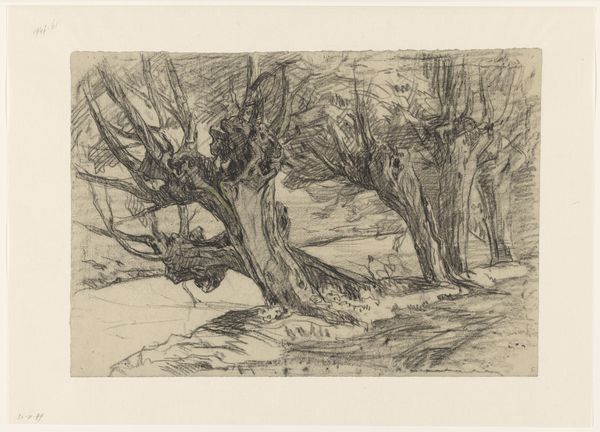
Dimensions: height 243 mm, width 187 mm
Copyright: Rijks Museum: Open Domain
Editor: Here we have Pieter Dupont's "Kale bomen bij het water," or "Bare Trees by the Water," an etching from 1895. I’m struck by its somber mood. The stark trees against the water create this feeling of stillness, almost loneliness. How do you interpret this work? Curator: It's interesting that you use the word loneliness, as it allows for interpretations about the socio-economic landscape of the Netherlands at the end of the 19th century. The Impressionistic style, focusing on landscapes, wasn’t just about aesthetics; it was often a reflection of people's relationship to their environment, their labor, and rapidly changing urban centers. How might the bareness of these trees reflect broader societal experiences of scarcity or change? Editor: I hadn't considered that connection. It makes me think about the industrial revolution's impact, possibly causing people to feel detached from nature, or even exploited by it? Curator: Precisely. Dupont’s choice of etching, a medium often associated with reproduction and accessibility, becomes politically charged. It makes us consider who had access to images of nature during that time. Was this a depiction accessible to the working class, or a landscape consumed by the bourgeois? What’s communicated by this landscape and to whom? Editor: That really changes my perspective. It's no longer just a pretty picture, but something embedded in the social context of the time. Curator: Exactly! Seeing art as a product of its historical and social forces can challenge the way we consume art. Editor: I'm definitely going to look at Impressionistic landscapes differently now. Thanks! Curator: It’s all about considering what stories the landscape conceals and reveals.
Comments
No comments
Be the first to comment and join the conversation on the ultimate creative platform.


